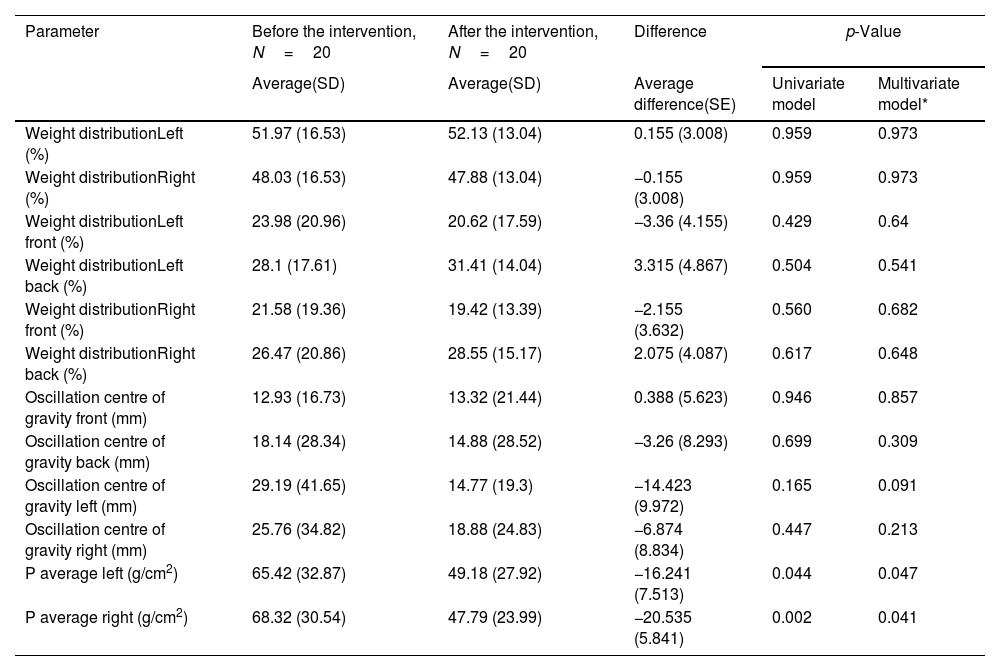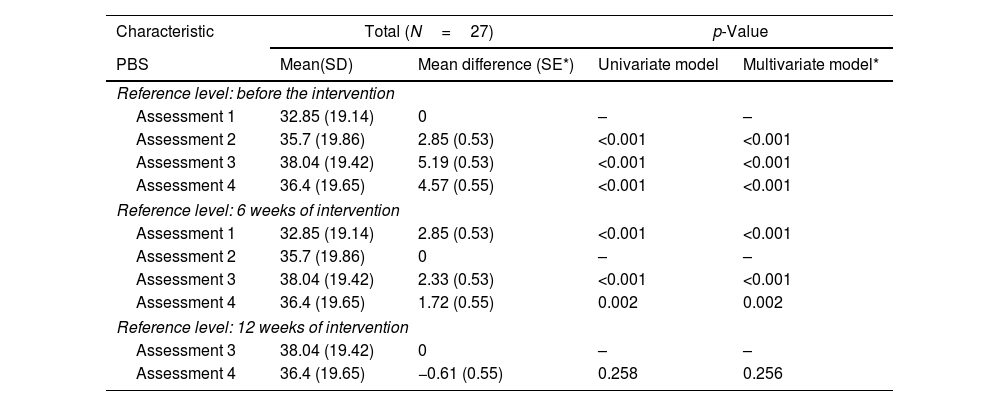To evaluate the efficacy of equine-assisted therapy for the static and dynamic balance in the rehabilitation of children and adolescents with cerebral palsy maintaining obtained improvement 8-weeks after the end of the intervention.
MethodThe study lasted 28 weeks, of which the intervention lasted 12 weeks. Measurements were taken before, in the middle, after the end of the intervention and follow-up after 12 weeks. Paediatric Balance Scale and dynamic plate were used to evaluate the balance. Wechsler Intelligence Scale for Children (3rd edition) was used to assess mental capacity, and the Gross Motor Function Classification System for the assessment of functional capacity for the participants. Exercises on the horseback were individualised for every participant.
ResultsThe study comprised 27 participants with cerebral palsy. Statistically significant improvements were found for the Paediatric Balance Scale (p<0.001) and the mean dynamic plate pressure for both feet (p<0.05). The Paediatric Balance Scale results remained in the follow-up and were found clinically significant.
ConclusionsThe results suggest that this type of approach in rehabilitation can be beneficial with clinical significance for improving the motor dysfunctions and quality of life in cerebral palsy.
Evaluar la eficacia de la equinoterapia para el equilibrio estático y dinámico en la rehabilitación de niños y adolescentes con parálisis cerebral, manteniendo la mejora obtenida durante ocho semanas tras la finalización de la intervención.
MétodoEl estudio tuvo una duración de 28 semanas, de las cuales la intervención ocupó 12 de ellas. Se tomaron medidas antes, durante y tras el fin de la intervención y seguimiento transcurridas 12 semanas. Se utilizaron la Pediatric Balance Scale y una placa dinámica para evaluar el equilibrio. Se utilizó la Wechsler Intelligence Scale para niños (3ª edición) para evaluar la capacidad mental, y el Gross Motor Function Classification System para evaluar la capacidad funcional de los participantes. Se individualizaron los ejercicios en el lomo del caballo para cada participante.
ResultadosEl estudio incluyó 27 participantes con parálisis cerebral. Se encontraron mejoras estadísticamente significativas de la Pediatric Balance Scale (p<0,001) y de la presión de la placa dinámica para ambos pies (p<0,05). Los resultados de la Pediatric Balance Scale se mantuvieron durante el seguimiento, encontrándose que eran clínicamente significativos.
ConclusionesLos resultados sugieren que este tipo de terapia de rehabilitación puede ser beneficioso, y tiene significación clínica, para la mejora de las disfunciones motoras y la calidad de vida en la parálisis cerebral.













